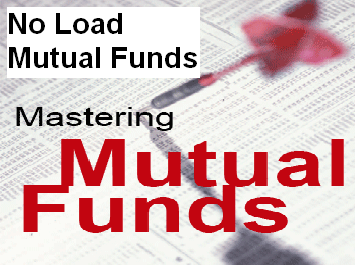
However, the terminology of load is not that simple. first let us look deeper into what is actually a LOAD when it comes to investments in mutual fund.
What is a Load in Mutual Fund Investment?
Mutual Fund Loads are fees or expenses taken or charged by mutual funds for compensation paid to brokers, their distribution network affiliates and to compensate for the sales and marketing costs. These expenses are usually known as the sales loads. They may also be called as the front end loads if they are charged to the investor while making an investment in the mutual fund. If similar charges are taken from the investors when they exit the fund or redeem their investment, then they are called back end loads.
Hence, the fund charges or LOAD charges can vary and cover a wide variety of charges. They can be charged when you enter into a fund or make a mutual fund investment or they can be charged when you exit from the mutual fund or redeeem your mutual fund units.
Say for e.g., if a fund has 2% entry load charges, and you invest 10,000 into that fund, then only 9800 of your money would be invested into the fund units. Rest 200 or 2% will be taken by the fund managers as entry load. Something similar may be applicable if there is an exit load. Say there is 1% exit load and your mutual fund investment value is 20,000 when you decide to redeem your mutual fund investment. Then your would recieve only 19,800 as the 200 or 1% of 20,000 would go towards exit load.
What are No Load Mutual Funds?
Now that you know what are the Load charges, we can now introduce the concept of No Load Mutual Funds. As the name indicates, no load mutual funds usually do not charge any sales loads to the investors of that particular mutual fund. No load mutual fund units are availabe for investment to the investors at the so-called "at-par" value of the fund or the equivalent net assets value of the fund. However, it is only the terminology that matters. Though the No Load Mutual funds claim be No Load, you as an investor, may still have to pay some charges or fees still chargeable to the purchasers of the funds. NASD allows mutual funds to charge some fees that are not considered as sales loads, so even through the fund may charge some fee in the name other than load charges, it can still claim itself to be a No Load Fund. Examples of such fees are exchange fees, purchase fees, redemption fees and account fees.
What is the advantage of a no load mutual fund?
Say if you are considering investing in 2 funds - one which has entry load charges of 2% and the other which does not have any entry load charges (No Load Fund). You decide to invest 10,000. So in the first fund, your actual investment would be only 9800, as 2% would go towards Load charges. In the second fund, since there are no entry load charges, your entire 10,000 would get invested. Hence, if both the funds have similar performance, the latter fund would give you better net returns. Also the compound interest factor returns would be higher in the latter fund, if you remain invested for longer time.
Are No Load Mutual Fund Investment always beneficial?
Not Necessarily and Not always. As we mentioned above, that it is only a matter of terminology. A so called No Load Mutual Fund may not charge any money to the investors in the name of load, but it may have some other fee and charges disguised in other terms. An investor should carefully look at these terms (or similar):
* Front End Load
* Front End Sales Charge
* 12b-1 Fees
* Deferred Load
* Actual Fees
Also be careful about the terms and conditions mentioned. A no load mutual fund may be no load only when invested for a period of 5 years. So if you decide to redeem your money before 5 year period, then you would end up paying a big amount of charges.
be careful with the sales person and agents who may not mention all the charges and conditions clearly to you. best way is to become knowledgable about the charges by carefully reading the brochuress and mutual fund prospectus yourself.
There is no guarantee that the no load mutual fund may perform better than the mutual fund with load.
No comments:
Post a Comment